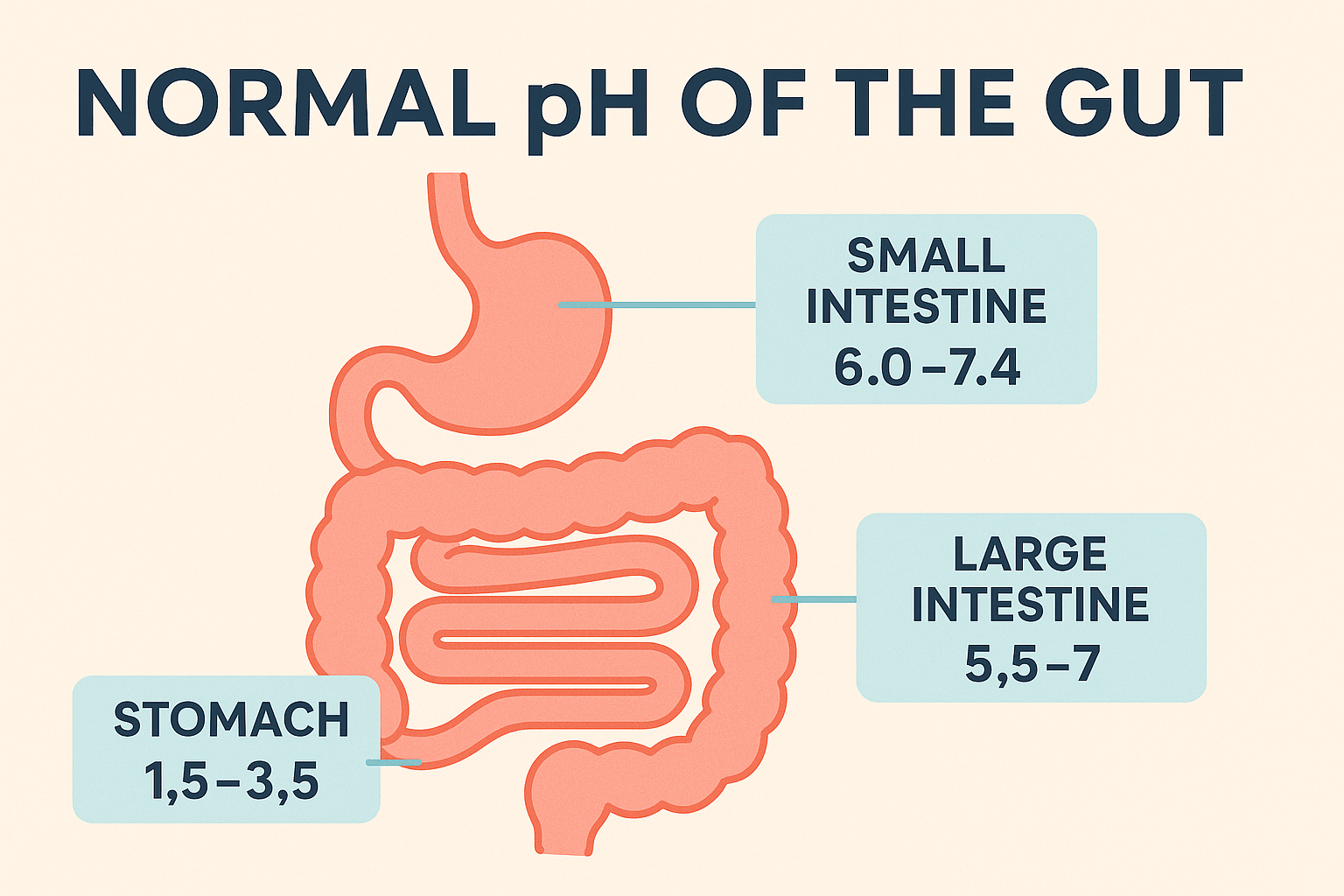
Qual è il pH Normale dell'Intestino? Una Guida Completa
Scopri il pH normale dell'apparato digerente e come varia lungo il tratto digestivo. Approfondisci il pH dell'intestino, del colon e... Leggi di più
It is intestines alkaline or acidic? This is a common question, and the honest answer is that it depends on where you are in the digestive tract. The stomach is highly acidic, with a pH around 1.5 to 3.5, which helps break down food and kill microbes. As chyme moves into the small intestine, bicarbonate from the pancreas and bile raise the pH to near-neutral or slightly alkaline levels (roughly pH 6 to 7.5), creating a hospitable environment for enzymes. Further along in the colon, microbial metabolism can generate acids that push local pH toward the acidic side, though many sections remain near neutral. In short, is the intestines alkaline or acidic? The answer is nuanced: pH shifts region by region and time of day, not a single global state. Understanding this pH choreography helps explain why digestion and nutrient absorption depend on a balanced gut environment. Practical steps to support gut health include prioritizing fiber-rich foods (fruits, vegetables, legumes, and whole grains) to feed beneficial microbes, staying well hydrated to maintain healthy intestinal fluids, and incorporating fermented foods with live cultures. If medications that alter stomach acidity are taken, discussing long-term use with a clinician is advised, as changes in pH can influence microbial balance and downstream digestion. Regular meal patterns and mindful intake of fermentable carbohydrates can also help keep the gut environment stable enough for enzymes to work effectively. To translate science into actionable insights, InnerBuddies offers a white-label Gut Health Operating System that powers brands’ gut microbiome testing products and also serves individual consumers. The platform features a Gut Microbiome Health Index (0–100) based on an exclusive IP deal with EAFIT University in Colombia, plus abundances for a top 40 bacteria set so you can compare yourself against a healthy cohort. It also categorizes bacterial metabolic functions into positive and negative groups, so you can see how you score on functional pathways relative to the healthy reference. Target Group analysis explores how the microbiome supports specific goals—Healthy Aging, Endurance Sport, Power Sport, Skin & Hair Health, and more. Personalized nutrition advice draws on three-day food diaries aligned with stool data to tailor guidance, while personalized probiotics and prebiotics recommendations match your unique microbiome profile. For those ready to explore, you can start with the innerbuddies microbiome test or learn more about ongoing support with the InnerBuddies Gut Health Membership, all under a scalable white-label platform. If a business seeks a scalable solution, InnerBuddies also provides a white-label option to power consumer gut test offerings. Partner opportunities can be explored at the InnerBuddies Partner Program, or the same high-quality consumer experience can be brought to customers through their flexible B2B framework. For individuals curious about how these insights apply to daily life, the combination of testing, tailored nutrition, and growth-oriented features makes it easier to act on whether the gut’s pH balance is supporting health goals.

Scopri il pH normale dell'apparato digerente e come varia lungo il tratto digestivo. Approfondisci il pH dell'intestino, del colon e... Leggi di più